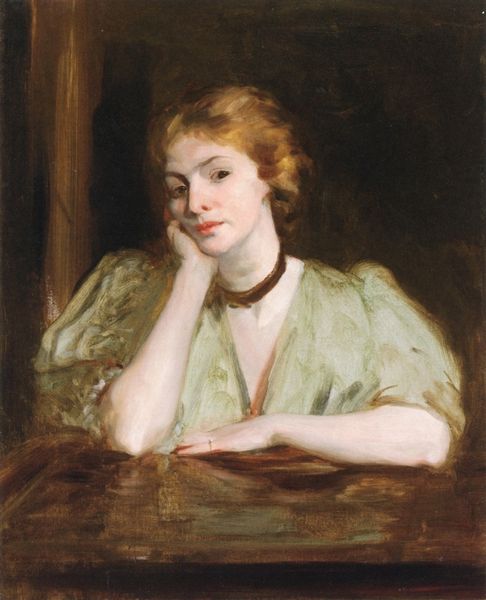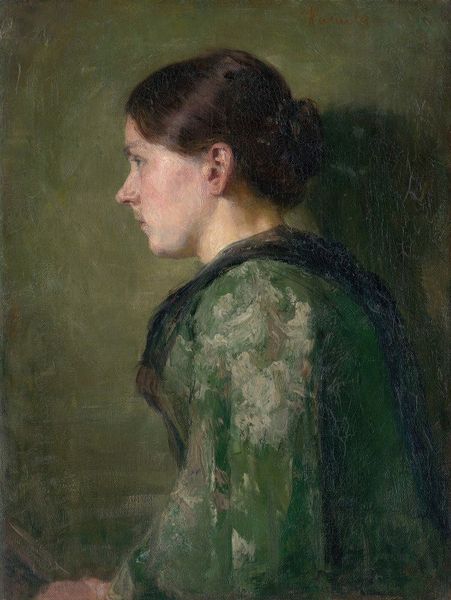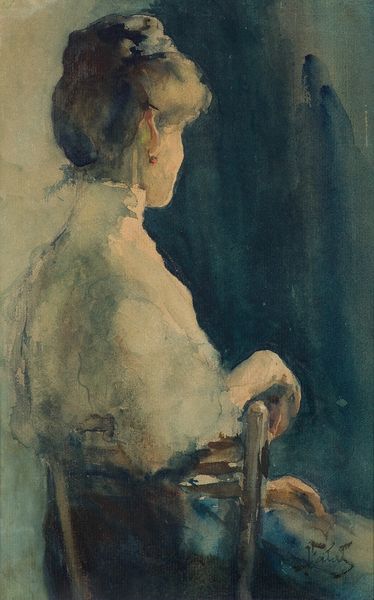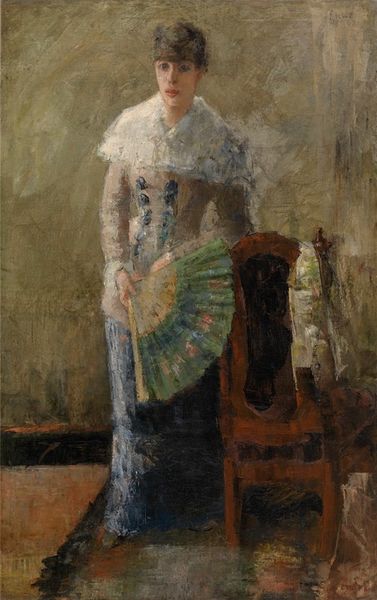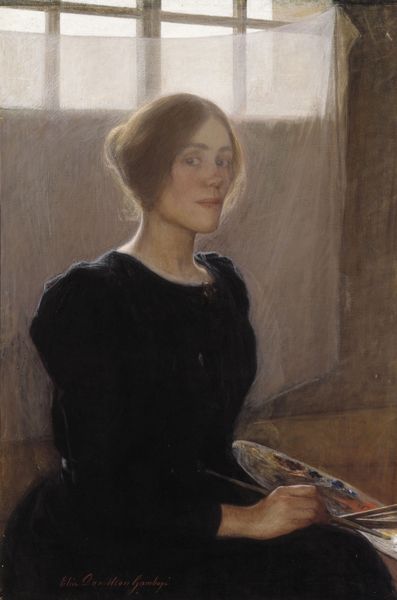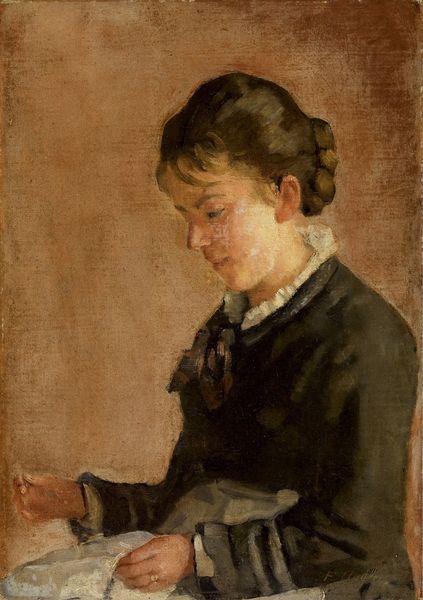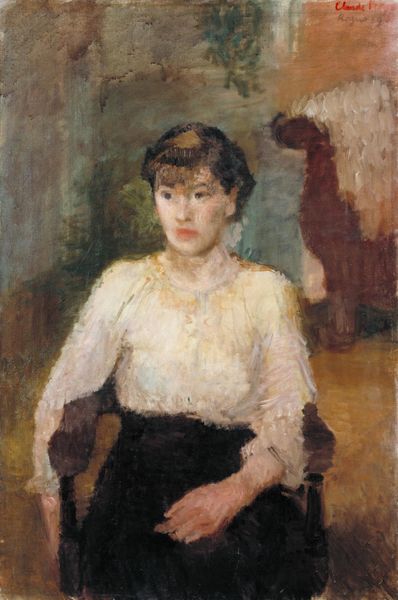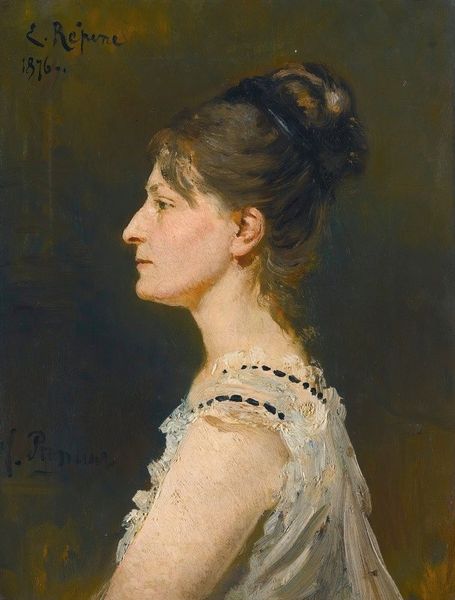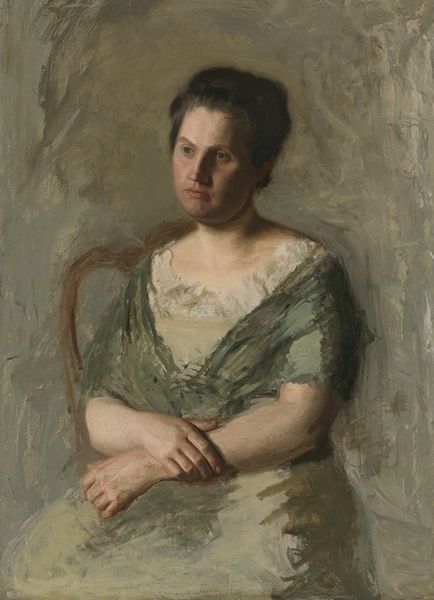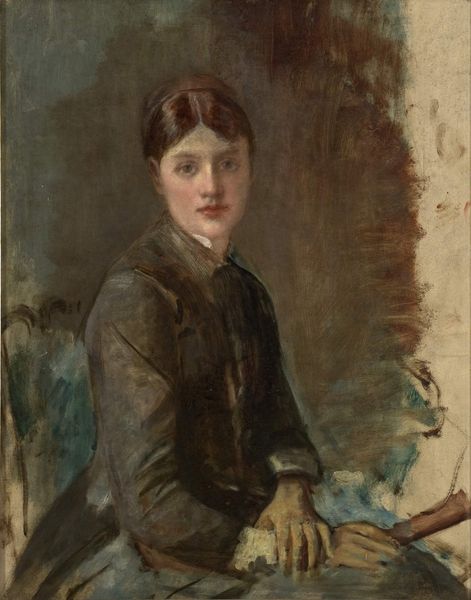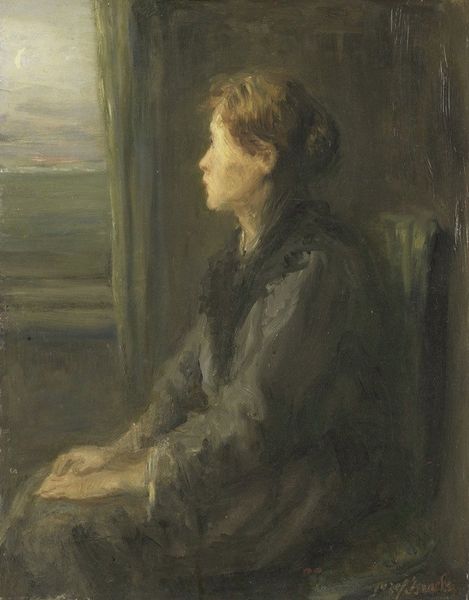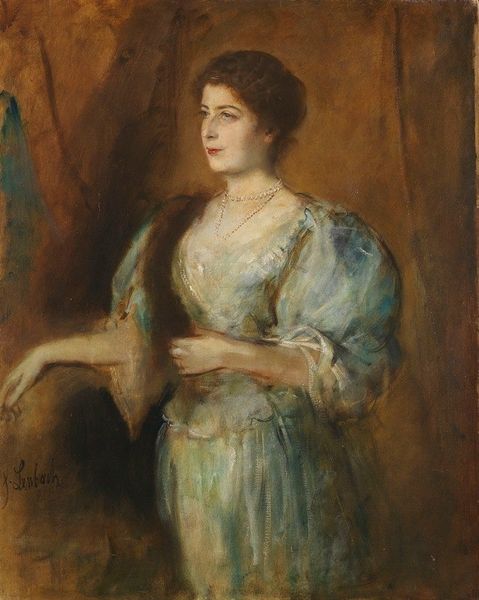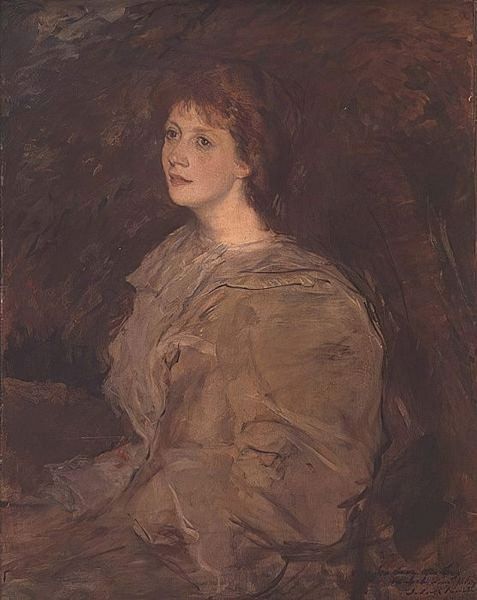
Copyright: Public Domain: Artvee
Curator: Magnus Enckell’s "Portrait of Miss Barbara Lagerborg," completed in 1925, is an oil painting that beautifully captures a quiet moment. Editor: It's so somber. The color palette feels restricted, all muted greens and browns except for her face, and that creates a sense of introspection, doesn’t it? Curator: It certainly does. Enckell was a significant figure in Finnish art, deeply influenced by symbolism and a champion for marginalized voices, particularly queer identity, at a time when such expressions were severely repressed. How might this background inform your understanding of Lagerborg’s portrayal? Editor: The downward gaze immediately tells me a story about modesty, about internalized constraint. It's powerful precisely because it avoids the performative confidence we often see in portraits of this era. Curator: I appreciate your reading of the downcast eyes as a potent signifier of societal constraints. Enckell's involvement in movements for social justice would certainly lend credence to such a perspective. Looking closely, there’s a very faint cruciform shape implied in the draping of the dress, drawing attention back to a history of iconic forms, but also female suppression in various social movements. Editor: Interesting. The face also embodies some clear iconographic tensions. It’s almost classical in its structure, evoking the ideal of feminine beauty, yet there's a softness in the brushstrokes that softens that classical edge, creating a real sense of lived experience behind the archetype. The gaze might signal constraint, but her averted eyes could also hint at inner rebellion. Curator: Exactly. And note how Enckell avoids idealization through careful observation of the sitter’s unique features. The somewhat melancholic aura is key, because it defies a superficial understanding of beauty. It acknowledges internal complexities. This was just after the Finnish civil war. The country, like the sitter, may be gazing at itself. Editor: I agree. Considering its cultural context really enhances its depth. The figure exists not just as an individual, but as a sign of resilience against dominant powers and prevailing tastes. Curator: Seeing through the lens of societal and political awareness can give the artwork a potent presence. Editor: It’s a good reminder that the quietest images can hold the loudest stories.
Comments
No comments
Be the first to comment and join the conversation on the ultimate creative platform.
